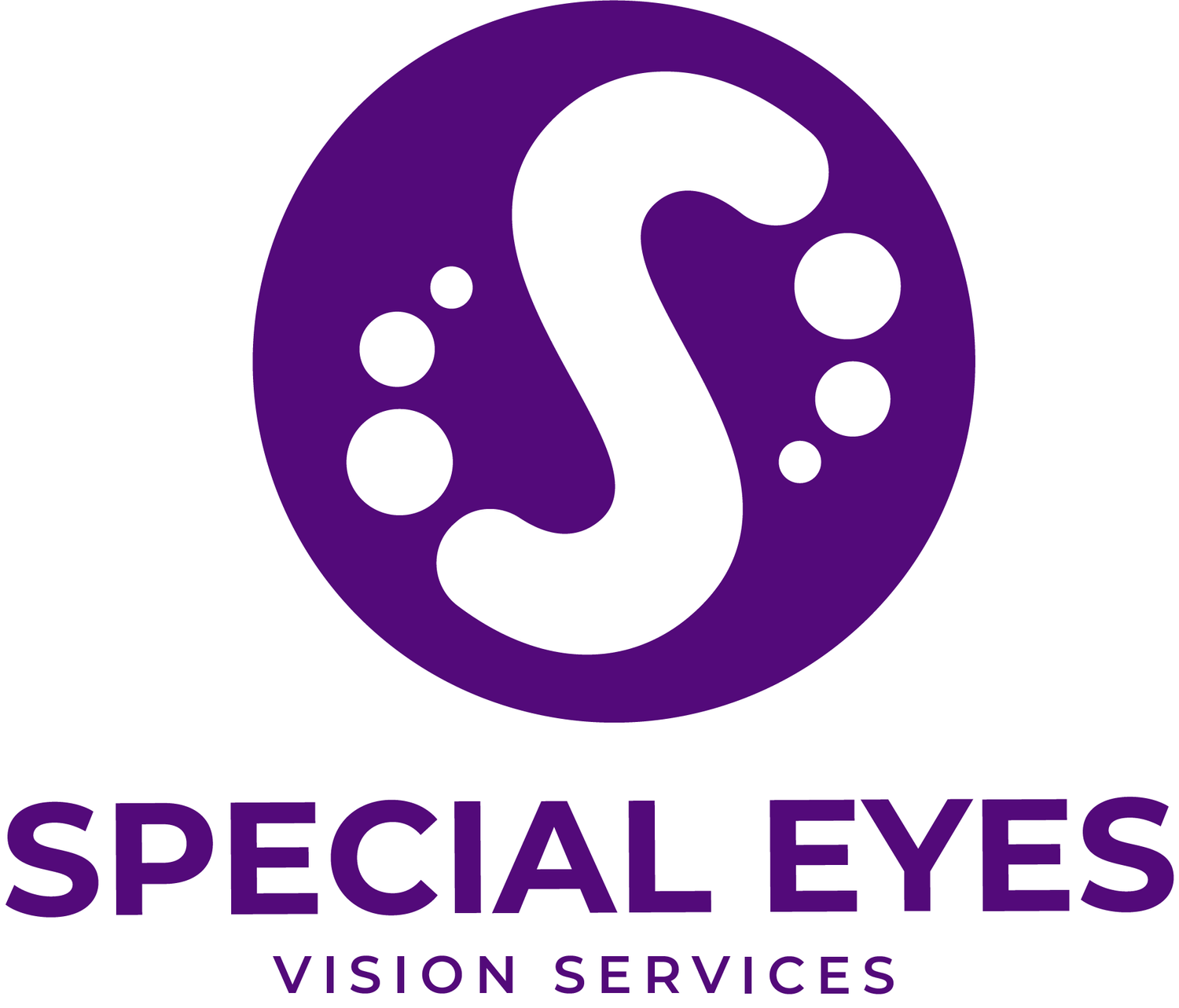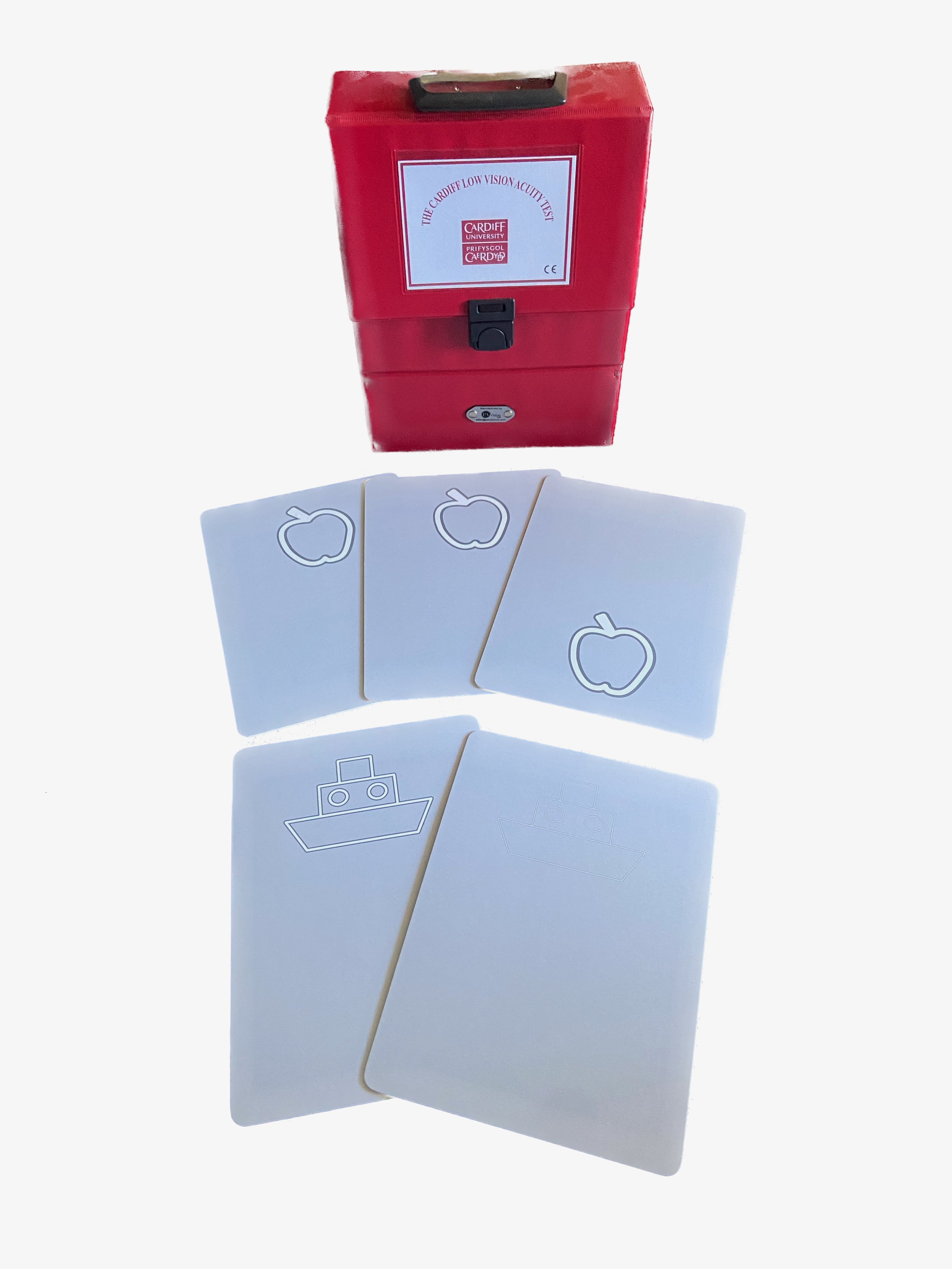Different types of vision tests. Part 1: The Cardiff Acuity Test
Image of the Cardiff Visual Acuity Test: Low Vision Edition. A red file box with a handle at the top. On the front is a label which reads ‘The Cardiff Low Vision Acuity Test’ and displays the logo for Cardiff University. In the foreground are some of the grey rectangular vision cards: a set with an image of an apple, and a set with an image of a boat.
Understanding the Cardiff Visual Acuity Test: A Simple and Effective Way to Check Your Child’s Vision
If you've ever wondered how vision is tested in very young children or individuals who can’t speak, you might be interested in the Cardiff Visual Acuity Test. This unique and innovative test is designed to measure vision in a way that’s easy, effective, and non-invasive for people who may have trouble with traditional eye tests.
Let’s break it down simply so you can understand how it works and why it’s so helpful!
What is the Cardiff Visual Acuity Test?
The Cardiff Visual Acuity Test is a special type of vision test that’s perfect for young children, especially those between the ages of one and three, or individuals who might have a disability that makes it hard to communicate. Unlike the usual vision tests where patients need to read letters or numbers, the Cardiff test uses pictures and tracks where the person is looking to see if they can make out the image.
The test is based on something we all do naturally: we tend to look at things that are more interesting, like patterns or pictures, rather than a plain background. This is known as preferential looking, a method used in vision testing where a person is more likely to look at a stimulus they can see rather than a blank or uniform background. The Cardiff Visual Acuity Test takes advantage of this natural instinct to help us understand how well someone sees.
How Does the Cardiff Visual Acuity Test Work?
Here’s how it works in simple terms:
The test uses cards with pictures on them. The pictures could be things like an apple, a boat, or a car, drawn with outlines made of thick and thin lines.
These pictures are on grey cards, and the important part is how the lines are drawn, comprising a central thick white line, surrounded by two thinner, dark grey lines. If someone has good vision, they’ll be able to detect the lines and recognize the shape.
The images used in the test are a form of vanishing optotype, which means that as the lines become thinner, they eventually blend into the background and "vanish" for someone with reduced vision. This helps to determine the smallest level of detail a person can see.
The cards are presented in a way that the picture can either be at the top or bottom of the card. The person being tested won’t be asked to say anything. Instead, the doctor or optometrist will watch where the person’s eyes go. If they look toward the picture, it means they can see it, and the doctor can determine their level of vision from there.
Why is it Great for Young Children and Those with Disabilities?
This test is perfect for children who are too young to read or speak. Since the test relies on where they look rather than what they can say, it works for babies and toddlers who can’t describe what they see yet. It also works for individuals who might have trouble communicating because of a disability or medical condition.
The Cardiff Visual Acuity Test is also fantastic for situations where you want to get accurate results quickly. It’s non-invasive, meaning no discomfort for the child or adult being tested, and it doesn’t require a lot of cooperation, which can sometimes be hard to achieve.
Key Benefits of the Cardiff Visual Acuity Test:
No Talking Needed: Great for babies, toddlers, and anyone who can’t speak or has a hard time communicating.
Quick and Easy: The test is fast and doesn’t take long, so it’s easier for children to stay engaged and comfortable.
Accurate Results: The test gives reliable results, helping eye health professionals assess vision in a way that’s as accurate as possible.
Helpful for Everyone: Whether you have a young child or an adult who may have trouble with traditional tests, this one can help you understand their vision more clearly.
Who Can Benefit from the Cardiff Visual Acuity Test?
The Cardiff Visual Acuity Test is especially useful for young children. It’s also great for those with intellectual disabilities, who might not be able to communicate well enough for traditional vision tests. The test is one of a suite of tools used to make sure that everyone, no matter their age or abilities, can have their vision assessed in a way that works for them.
Conclusion
If you’re a parent or caregiver of a young child, or if you’re caring for someone with a disability, the Cardiff Visual Acuity Test is a wonderful tool to assess vision without needing them to speak or cooperate in the usual way. It’s a quick, easy, and non-invasive way for health professionals to ensure that their vision is healthy and that they are seeing the world clearly.
So, the next time you’re wondering how vision is tested for young kids or non-verbal individuals, you’ll know that the Cardiff Visual Acuity Test is an incredibly useful and reliable option that helps us get the answers we need to care for our patients' eye health.
Thanks for reading! If you want to learn more about how vision assessments work, feel free to check out my website or reach out for more information. I'm always keen to chat!

